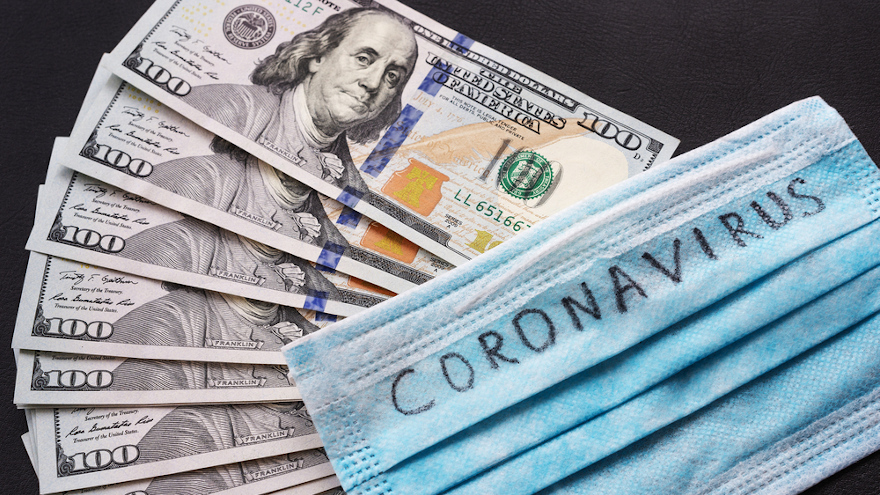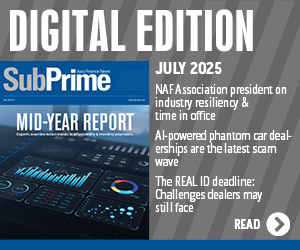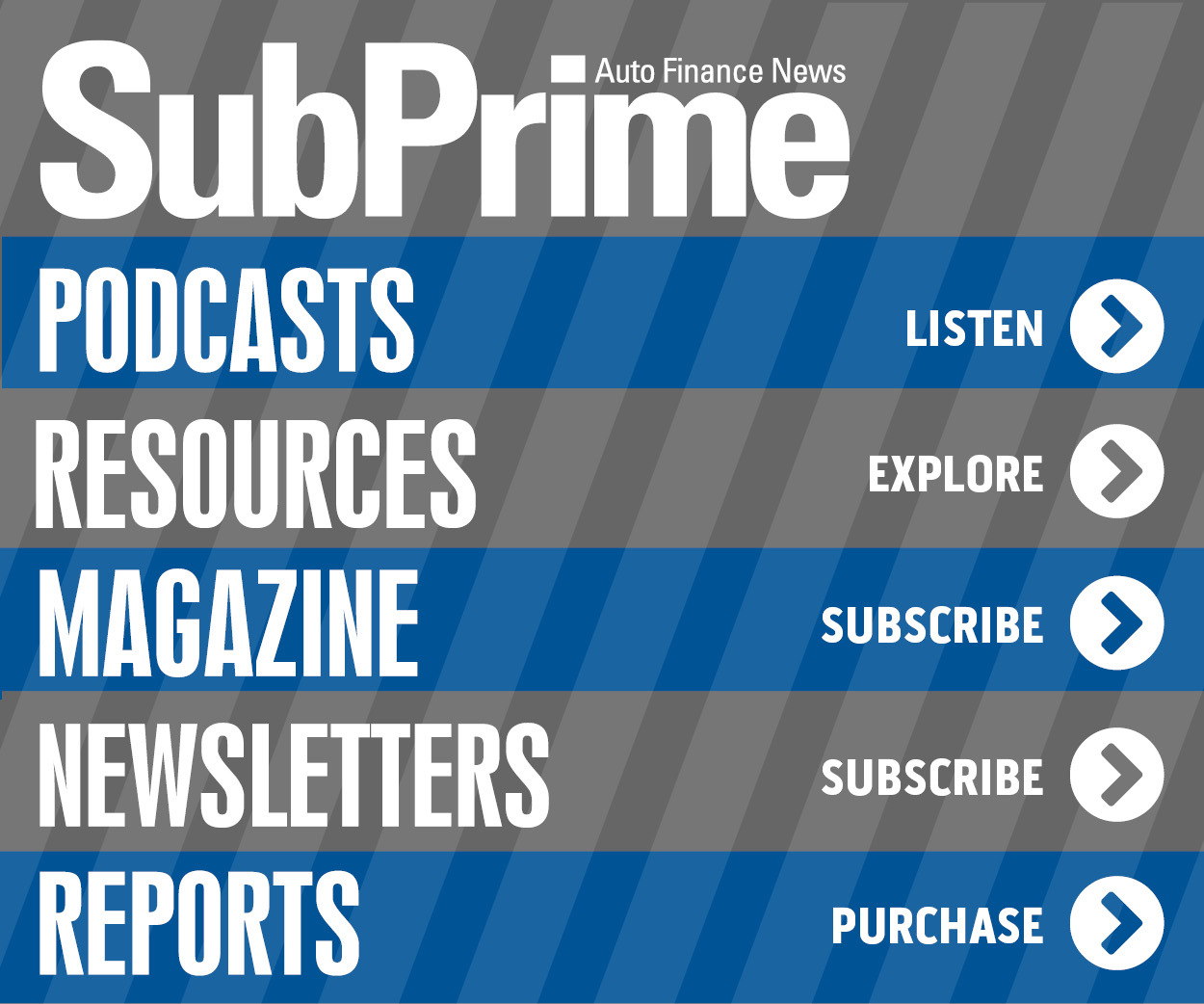Auto ABS ratings from 10 subprime finance companies now on CreditWatch negative

Image by Irina Skobeleva / Shutterstock.com
S&P Global Ratings is keeping an even closer watch on subprime auto financing with the coronavirus pandemic still paralyzing the economy.
This week, the firm placed its ratings on 33 classes of U.S. subprime auto ABS ratings across 26 transactions from 10 originators on CreditWatch with negative implications, following analysts’ review of all ABS transactions backed by subprime auto receivables.
The 10 subprime finance companies involved in this action include:
— American Credit Acceptance
— Bridgecrest Acceptance
— Consumer Portfolio Services
— Exeter Finance
— First Investors Financial Services
— Flagship Credit Acceptance
— Global Lending Services
— Prestige Financial Services
— Sierra Auto Finance
— Westlake Financial Services
The firm pointed out the actions are on securities rated below investment grade (below BBB-).
“The CreditWatch listings result from the COVID-19 economic downturn, which we expect to negatively affect the performance of all auto loan originators,” S&P Global Ratings said in a message sent to SubPrime Auto Finance News. “The most recent performance reports already show an increase in delinquencies and extensions.
"Although we expect this increase in extensions to be temporary and the economy to begin to rebound in the second half of the year, we believe this will still lead to higher cumulative net losses and reduced excess spread over the life of each transaction,” analysts continued. “As a result, the tranches placed on CreditWatch may not have sufficient enhancement to support the current ratings.”
S&P Global Ratings reported the COVID-19 pandemic is starting to take a toll on monthly auto ABS credit performance.
The firm indicated March’s subprime loss rate of 8.37% was the highest March loss rate since 2009 and the segment’s recovery rate and 60-day delinquency levels were at the worst March levels S&P Global Ratings has ever seen.
Also, analysts pointed out March’s prime recovery rate of 53.89% was the lowest March recovery rate they’ve spotted since 2009.
In determining which transactions to place on CreditWatch, S&P Global Ratings explained that it reviewed its current expected cumulative net losses and increased the remaining expected cumulative net losses by 15% in its analysis to see which classes had enhancement sufficient at the current rating levels. Analysts based this scenario on the approximate 30% increase in losses relative to original expected cumulative net losses that the subprime transactions they rated in 2007 experienced during the credit crisis.
As its rating approach incorporates a forward view of the economy, S&P Global Ratings said it believes the current unprecedented recessionary environment justifies increasing our base-case losses for securitizations.
Analysts’ current baseline forecast is for unemployment levels to increase to an average of 8.8% for 2020, declining to an average of 6.7% in 2021; therefore, not remaining at elevated levels as long as they did during the Great Recession, according to the firm.
“As such, we believe performance deterioration could be relatively muted,” S&P Global Ratings said. “However, there is a great deal of uncertainty around this forecast, as it depends on the containment of the pandemic, how quickly business activity can resume, and the effectiveness of the fiscal stimulus/relief programs.
“We will continue to closely monitor and refine our expected cumulative net losses as more performance metrics become available,” the firm continued.
S&P Global Ratings also mentioned that its team took into account the various structural features for each rated note. Analysts pointed out all the transactions contain a sequential principal payment structure by which the notes are paid principal by seniority.
The firm noted each tranche also has credit enhancement in the form of a non-amortizing reserve account, overcollateralization, subordination (for those few tranches that are not the most subordinated class) and excess spread. For most tranches, S&P Global Ratings computed the credit enhancement for each class’ credit support continues to increase as a percentage of the amortizing collateral balance, which may offset some of the potential increase in its expected cumulative net losses.
S&P Global Ratings projected the securities most at risk of downgrade are speculative grade — ones rated BB+ (sf) or lower). By definition, analysts explained these classes have lower credit enhancement with which to cover higher-than-expected losses.
“Further, a large portion of credit support for these deeply subordinated classes comes from excess spread, which is volatile and can be impaired by a number of factors, including the timing of losses,” analysts said.
The firm is expecting to resolve the CreditWatch placements as it learns more about the severity and duration of the COVID-19-induced impact on the sector as a whole and on each of the respective issuers more specifically.
“During this time, we will continue to review industry data and transaction-level performance reports, and continue to speak with the originators to inform our view of each transaction’s future performance,” analysts said.
S&P Global Ratings acknowledged a high degree of uncertainty about the rate of spread and peak of the coronavirus outbreak. The firm recapped that some government authorities estimate the pandemic will peak around midyear, so analysts are using this assumption in assessing the economic and credit implications.
“In our view, the measures adopted to contain COVID-19 have pushed the global economy into recession,” analysts said. “As the situation evolves, we will update our assumptions and estimates accordingly.
S&P Global Ratings went on to predict the recession could negatively affect contract holders in the subprime pools to a greater extent than consumers within the prime segment. Many contract holders in the subprime pools may not have savings to cover a temporary loss of income, according to the firm.
“Consideration was given to the governmental support programs related to the health pandemic for both businesses and consumers — most notably the CARES Act, which, among other things, provides expanded unemployment benefits and one-time stimulus checks for individuals below certain income levels,” analysts said. “These payments may offset loss of income for some borrowers, decreasing the amount of cumulative net losses the transactions may have incurred had the measures not been enacted.
“From discussions with issuers, these payments and extensions have thus far limited the impact on the transactions' performance,” analysts continued. “However, we don’t believe this trend will continue over the longer term as consumers stop receiving the stimulus checks and recoveries on charged-off accounts decrease, coupled with a less favorable economic environment than what existed in previous years.”


